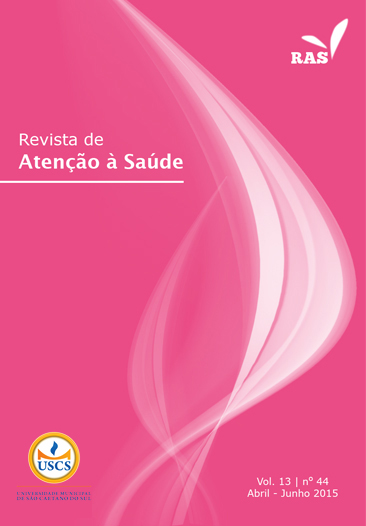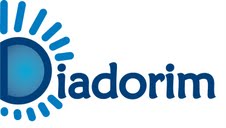ANALYSIS OF CHARACTERISTICS OF LEGIBILITY OF PRESCRIPTION FOR MEDICATIONS AND THE PHARMACOTHERAPEUTIC PROFILE OF HYPERTENSIVE PATIENTS
DOI:
https://doi.org/10.13037/ras.vol13n44.2543Keywords:
Polymedication, readability, hypertension, proton-pump inhibitorAbstract
Introduction: There are circumstances in the process of prescribing medication, especially with the hypertensepatients, which could be avoided and reduce costs, for example: a better communication between thedoctors, because that would minimize polymedication. Objective: Analyze the characteristics of the legibilityof medication prescription and the pharmacotherapeutic profile of the hypertense patients. Method:This is a descriptive study with 422 recipes, which presented anti-hypertension medication being thrownaway by the City University of Sao Caetano do Sul (USCS) pharmacy between August of 2012 and Decemberof the same year. Verified by legibility, classifying the prescriptions as: readable, barely readable,and unreadable. The indicators of the recommended medication that were evaluated are the ones used by the World Health Organization. Observing the pharmacotherapeutic profile, the medications were classified by the AnatomicChemical and Therapeutic index. Results: it was observed that 37.9% of the prescriptions were unreadable because, whenreading the prescriptions, there was a high level of difficulty in reading and comprehension. There were 1,908 medicationsprescribed, 4.5% for each prescription. Of this total, 88% you can find generic dominance and 71.5% are standardized by theNational Medication Relations. 63% of the medication prescribed acts on the cardiovascular system, followed by the alimentarytract and metabolism (19.6%), blood and hematopoietic organs (4.9%) and medications that act on the nervous system(4.2%). Conclusion: The results in this study indicate prescriptions with polymedication and very little readability as maincharacteristics. As for the pharmacotherapeutic profile of the hypertensive prescriptions it was observed the importance, of thepresence of proton-pump inhibitor in medication, diabetes and the antithrombotics.Downloads
References
1. Vieira FS, Mendes ACR. Evolução dos gastos do Ministério da Saúde com medicamentos. Área de Economia da Saúde e Desenvolvimento Núcleo Nacional de Economia da Saúde, Ministério da Saúde, 2007.
2. Instituto Nacional de la Salud. Memoria 2000. Madrid:Closas-Orcoyen, S.L.; 2001.
3. Buske L. Health care spending rises 4.6% in 2003. CMAJ. 2004;170(3):325.
4. Moynihan R. Drug spending in North America rose by 11% in 2003. BMJ. 2004;328:727.
5. Kondro W. Drug spending hits $24.8 billion. CMAJ. 2006;175(1):22. Conselho Federal de Farmácia. Código de ética da profissão farmacêutica. Diário Oficial da União 2004.
6. Melo DO, Ribeiro E, Storpirtis S. A importância e a história dos estudos de utilização de medicamentos. Rev Bras Cienc Farm. 2006;42(4):475-85.
7. Vieira FS. Assistência farmacêutica no sistema público de saúde no Brasil. Rev Panam Salud Pública. 2010;27(2):149-56.
8. Brasil. Ministério da Saúde. Política nacional de medicamentos. DOU. 2001;C(25):23-6.
9. Organização Mundial da Saúde. Medicamentos: uso racional de los medicamentos. Nota descriptiva n° 338 [Internet]. 2010 [acesso em 30 de Março de 2013]. Disponível em: http://goo.gl/QhxQAq
10. Lei nº 5.991 (17 de dezembro de 1973) [acesso em 29 de Março de 2013]. Disponível em: http://www.planalto.gov.br/ccivil_03/leis/L5991.htm
11. Brasil. Agência Nacional de Vigilância Sanitária. Resolução nº 16 [Internet]. Diretoria Colegiada; 2007 [acesso em 30 de Março de 2013]. Disponível em: http://s.anvisa.gov.br/wps/s/r/pki
12. Organização Mundial de Saúde. How to investigate drug use in health facilities: selected drug use indicators.WHO. DAP 93.1; 1993.
13. Galato D, Silva ESD, Tiburcio LDS. Estudo de utilização de medicamentos em idosos residentes em uma cidade do sul de Santa Catarina (Brasil): um olhar sobre a polimedicação. Ciênc Saúde Colet. 2010;15(6):2899-905.
14. Bjerrum L, Sogaard J, Hallas J, Kragstrup J. Polypharmacy in general practice: differences between practitioners. Br J Gen Pract. 1999;49:195-8.
15. Campana ÉMG, Lemos CC, Magalhães MEC, Brandão AA, Brandão AP. Interações e associações medicamentosas no tratamento da hipertensão – bloqueadores alfa-adrenérgicos e vasodilatadores diretos. Rev Bras Hipertens. 2009;16(4):231-6.
16. Moreno AH, Nogueira EP, Perez MPMS, Lima LRO. Atenção farmacêutica na prevenção de interações medicamentosas em hipertensos. Rev Inst Ciênc Saúde.2007;25(4):373-7.
17. Bueno CS, Bandeira VAC, Oliveira KR, Colet CF. Perfil de uso de medicamentos por idosos assistidos pelo Programa de Atenção ao Idoso (P.A.I.) da UNIJUÍ. Rev Bras Geriatr Gerontol. 2012;15(1):51-61.
18. Rothberg MB, Pekow PS, Liu F, Korc-Grodzicki B, Brennan MJ, Bellantorio S, Heelon M, Lindenauer PK. Potentially inappropriate medication use in hopitalized elders. J Hosp Med. 2008;3(2):91-102.
19. Júnior DPL, Prado MCTA, Abriata JP, Pelá IR. Receta médicas como causante de riesgo de problema relacionados con medicamentos. Seguim Farmacoter 2004,2(2):86-96.
20. Araújo PTB, Uchôa SAC. Avaliação da qualidade da prescrição de medicamentos de um hospital de ensino. Ciênc Saúde Coletiva [periódico na Internet]. 2011 [acesso em 1 de Abril de]; 16(1):1107-14.
21. Oliveira LCF, Assis MMA, Barboni AR. Assistência farmacêutica no sistema único de saúde: da política nacional de medicamentos à atenção básica à saúde. Ciênc. saúde coletiva [periódico na internet] 2010 [acesso em 18 maio 2012]; 15(3):3561-7.
22. Instituto Brasileiro de Geografia e Estatística. Censo Demográfico 2010. 2011.
23. Rosa MB, Neiva HM, Anacleto TA, Mendes DP, Freitas FO, Lage JB, Perini E. Legibilidade de prescrições médicas com medicamentos potencialmente perigosos em um hospital de Belo Horizonte, MG. Rev SBRAFH. 2003;(2):22-8.
24. Frenk J, Frejka T, Bombadilla JL, Stern C, Lozano R, Sepúlveda J, et al. La transición epidemiológica en América Latina. Boletín Oficina Sanit Panam. 1991;111(6):485-96.
25. Santos V, Nitrini SMOO. Indicadores do uso de medicamentos prescritos e de assistência ao paciente de serviços de
saúde. Rev Saúde Públ. 2004;38(6)819-26.
26. Silva AL, Ribeiro AQ, Klein CH, Acurcio FA. Utilização de medicamentos por idosos brasileiros, de acordo com a faixa etária: um inquérito postal. Cad Saúde Públ [periodico na internet]. 2012 [acesso em 27 de junho de 2013]; 28(6):1033-1045.
27. Silvério MS, Leite ICG. Qualidade das prescrições em Município de Minas Gerais: uma abordagem farmacoepidemiológica. Ver Assoc Med Bras. 2010;56(6):675-80.
Downloads
Published
Issue
Section
License
Copyright (c) 2015 Vanessa Zandoná Mendes, Cicera Cristina Vidal Aragão, Cicera Cristina Vidal Aragão, Wilson Sabino, Wilson Sabino

This work is licensed under a Creative Commons Attribution-NonCommercial-NoDerivatives 4.0 International License.
Policy Proposal for Journals offering Free Delayed Access
Authors who publish in this magazine agree to the following terms:
- Authors maintain the copyright and grant the journal the right to the first publication, with the work simultaneously licensed under a Creative Commons Attribution License after publication, allowing the sharing of the work with recognition of the authorship of the work and initial publication in this journal.
- Authors are authorized to assume additional contracts separately, for non-exclusive distribution of the version of the work published in this magazine (eg, publishing in institutional repository or as a book chapter), with the acknowledgment of the authorship and initial publication in this journal.
- Authors are allowed and encouraged to publish and distribute their work online (eg in institutional repositories or on their personal page) at any point before or during the editorial process, as this can generate productive changes, as well as increase impact and citation of the published work (See The Effect of Open Access).









